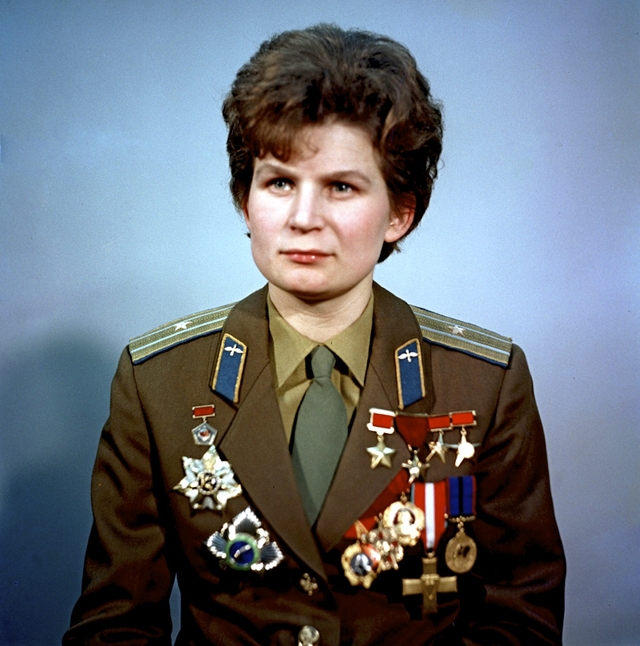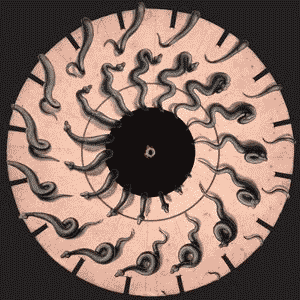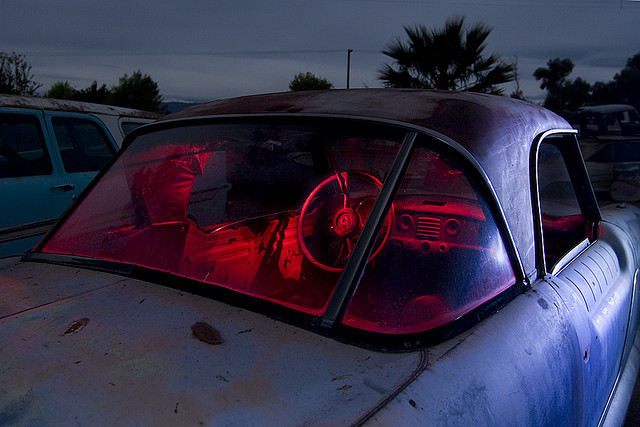
Arthur Radebaugh, 1906-1974

Master of the Airbrush
He was born on 14 May 1906 in Coldwater, Michigan. After high school he moved to Illinois in 1925 and began his studies at the Chicago Art Institute. With the exception of the airbrush, it seems that the institute had little to offer this creative man. After all, art studies are exercises in reviewing the conventional, and this man didn’t seem the least bit interested in that. He left the school after one and a half years. In 1930 he returned to Michigan and worked various jobs as an illustrator. It wouldn’t be until 1935 that his unique talent, style, and vision would become recognized by the heavy hitters in the graphic arts industries. His name was Arthur Radebaugh and his particular artistic genius would become a symbol of an optimistic techno-utopia longed for by many post-WWII.

MoToR Magazine ANNUAL SHOW NUMBER – November 1935. Arthur Radebaugh’s breakthrough cover illustration for which he was paid $450.00.
From 1936 until 1942, Radebaugh’s distinct airbrushed illustrations adorned the covers of various magazines like Fortune, Esquire, the Saturday Evening Post, and others. His futuristic deco-style creations were displayed in adverts for Dodge, Bendix, United Air Lines, and more.

Saturday Evening Post Cover, September 20, 1941 – Arthur Rabenaugh Illustrator

1937 Bendex Automotive and Aviation Products Promotional Poster – Arthur Radebaugh Illustrator

1938 National Hotel Management Co., Inc. Advert – Arthur Radebaugh Illustrator

1939 Hercules Powder Company Advert – Arthur Radebaugh Illustrator

‘Dodge Luxury Liner: Dodge’s Silver Anniversary Triumph’ – 1939 Brochure Illustrator: Arthur Radebaugh
In November of 1942 Radebaugh began his enlistment in the U.S. Army. He worked in the Pentagon Ordnance Research and Development Dept./Design and Visualization Branch. He led a team of artists and designers who worked on the development of various weaponry. Radebaugh’s work in creating florescent dials for vehicle and aviation instrument panels gave him a tool that he would use in the years after his military career. He would create ‘Black Light Magic‘ in his works that would become part of his artistic signature. He finished his duties in the Army with the rank of Major in November, 1945.
Radenbaugh’s return to Detroit seemed to be perfectly timed. The city was preparing for the fiftieth anniversary of the American auto industry – Detroit’s Golden Jubilee 1896-1946. Radenbaugh was commissioned to design a symbol for the event that would be used as a logo for print materials, memorabilia, and other ephemera. It was also built into a sixty-five foot statue that was on display in Grand Circus Park for many spectators to see and enjoy.


Image on the left – 1946 Detroit Automotive Golden Jubilee Program Cover – Arthur Radebaugh Illustrator (via Clarence’s Car Journal). On the right – 1946 Detroit Golden Jubilee Statue – Designed by Arthur Radebaugh.
[the] Queen of the Golden Jubilee will be the first woman in history to use atomic power for peacetime purposes in public ceremonies Wednesday night at 9 p.m. when she illuminates and sets in motion the spectacular automotive symbol in Detroit’s downtown Grand Circus Park to usher in the twelve-day Golden Jubilee celebration. …The Queen will wave a wand of neutron-splitting beryllium over a tube of boron, smashing a boron atom. Energy thus produced will be transmitted to the symbol electrically to illuminate its spiralling neon conception of an atom in fission, its antique car and its modern car. — Golden Jubilee press release
Radebaugh’s work with the auto industry probably paid for most of the bills, but his most recognizable and enduring illustrations were those produced for the Detroit based Bohn Aluminum and Brass Corporation. In the 1940s Bohn presented a forward looking, avant garde vision of the future. This was the perfect playground for Arthur Radebaugh’s creative imagination. From hands-free phones, to lightweight energy-saving amusements, to pushbutton overhead kitchen appliances, to planes, trains, and automobiles, Radebaugh’s streamlined techno-utopian style positioned Bohn as a visionary company ready for the technological progress promised for the 20th century and beyond.

One of the First Radebaugh Bohn Illustrations – March 1941

Bohn – July 1945

Bohn – May 1946

Bohn – January 1947

Bohn – August 1947

Bohn – 1947
From 1951-1955, Radebaugh’s services were hired by National Motor Bearing, (NBM), in Redwood City, California. His illustrations were decidedly different than those for Bohn. NMB had the same idea to present themselves as a forward looking company – Mars colonization included – yet the approach appeared less exciting and more utilitarian. Though the machinery and technology showed a fascinating future ahead, the monochrome images suggested a future less bright. Insect-like machinery, tentacled farming equipment, and lonesome robots in large warehouses gave a very impersonal alienating effect.

Radebaugh Illustration for NMB – ‘Mole-Like’ machines for underground digging. (1952)

Radebaugh Illustratoin for NBM – Tentacled push-button farm machines (1954)

Radebaugh Illustratoin for NBM – Atomic machines on Mars (1954)

Radebaugh Illustratoin for NBM – ‘Rolling Robots’ working in massive warehouses (1953)
As the fifties progressed print advertising began to move towards photography rather than illustration to sell products. Near the end of the decade, Radebaugh switched gears as well. 1958 would be the year that Radebaugh’s future vision and ‘imagineerings’ would begin to reach millions in the form of his nationally syndicated comic, Closer Than We Think. The strip ran from January of that year until January 1963. Radebaugh toured the country in his Ford Thames custom van finding inspiration and ideas as he went along. Each week Radebaugh would present an illustration of a newly found concept or a prediction of his own. Closer Than We Think inspired a generation of scientists, designers, and engineers.

Closer Than We Think: Satellite Space Station – the first strip published on 12 january 1958

Closer Than We Think: One-World Job Market (1959)

Closer Than We Think: Wall-To-Wall Television (1961)
Due to health issues, Arthur Radebaugh retired from his work as an illustrator in 1963. He fell upon hard times financially and was forced to sell most of his personal belongings. Radebaugh spent his last years in Grand Rapids, Michigan. As time marched on, his work and his name faded into obscurity. On 17 January 1974, Arthur C. Radebaugh died in a military hospital.
Fortunately, his art has emerged from the shadows to fascinate the people of the 21st century. While working as director of Lost Archives in Philidelphia, PA., historian Todd Kimmel obtained a large repository of commercial negatives. In 2001 he discovered twenty-five Radebaugh works amongst that collection. Working with Jared Rosenbaum and Rachel Mackow, Kimmel co-created Radebaugh: The Future We Were Promised traveling exhibit. The show was on the road in 2003-2004. An online exhibit was also set up. Since then, interest in the world of Radebaugh continues to grow – forty years after his passing, a new generation now acknowledges a man who so inspired the technologies we enjoy today…and perhaps beyond.
For more information about Arthur Radebaugh – his life and works – check out:
Radebaugh: The Future We Were Promised – A tribute site with biography, chronology, and examples of works.
Visually Telling Stories (VTS) – An excellent collection of Radebaugh’s Bohn Illustrations.
Paleo-Future – A large collection of, and discussion about, Closer Than We Think.













































